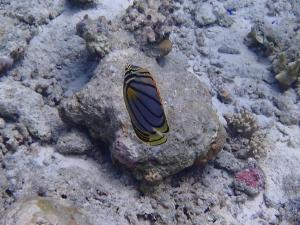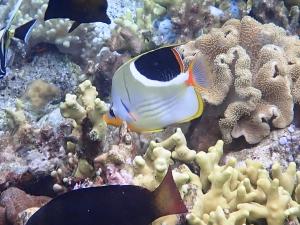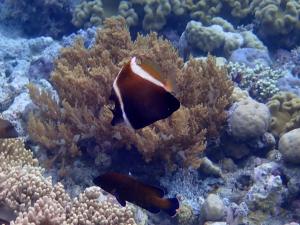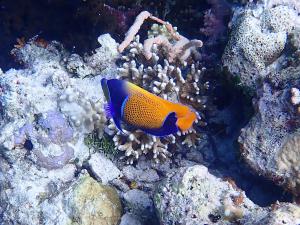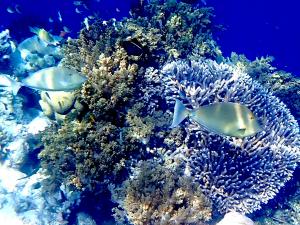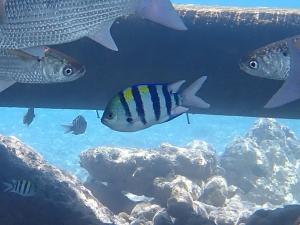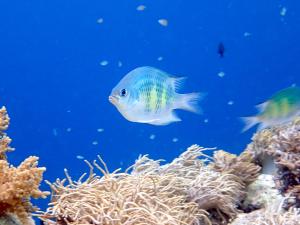
Wakatobi, Indonesia
Wakatobi, Pulau Tolandono, South East Sulawesi S06 E124, Indonesia
Coordinates in degrees decimal: N -5.7761111, E 123.8947222
Visited in April, 2018. Photographer: Nigel Thomas. Cameras: Pentax WG-II, Sea & Sea 1G with DX1G housing and Olympus Tough T5.
Website: https://www.wakatobi.com/. If you fancy visiting this resort with like minded snorkellers, then have a look at our sister website, Planet Snorkeling, who are running a trip there in 2024, https://trips.snorkeling-report.com/wakatobi/
Overview
Wakatobi Resort is located on a small island, Pulau Tolandono, adjacent to the slightly larger Pulau Tomia, in the Banda Sea. It is a resort run by divers, for divers, so it would be a shame to go there and not have a dive! Having said that it also has an excellent house reef and lagoon area, with easy and accessible snorkeling. Access can be gained to the waters of the lagoon off the shallow, shelving beaches. The deeper water, reef edge, can be accessed using the steps at the end of the jetty. Although current conditions can be challenging on big tides, particularly to the south of the area, the resort operates a well controlled, observation and recovery facility. If you want to snorkel a good distance and can’t be bothered to swim back, they will come and get you! Be aware of vessel activity picking up and landing divers at specific times of day.
This is one of the resorts particularly worthy of a night snorkel and you can explore further snorkelling locations (in the company of divers!) from the dive boats.
Approximately 340 species identified, of which over 150 are fish. These photos provide a (partial) inventory of the species present, so some of the images are not best quality. If you want to see the fish from the area, more beautifully photographed than I can achieve, then go straight to Pam Osborn’s e-book Reef Life https://books.apple.com/us/book/wakatobi-reef-life/id1392300594. (all her photos are taken while snorkeling!).
Information was updated with the support of the resort.
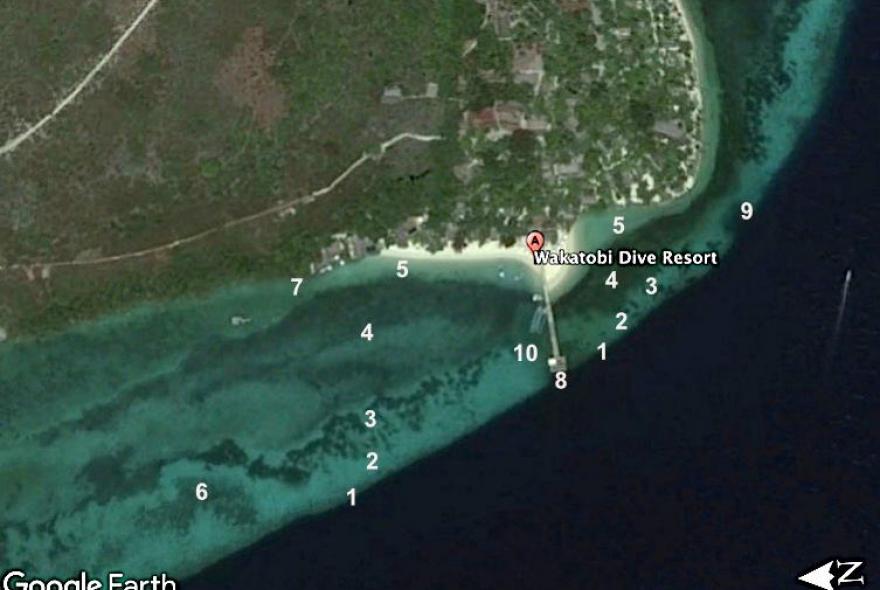
The reef and lagoon area comprise several different habitat types, numbered 1-10 on the map. These include the reef edge and vertical face (1), scattered hard and soft coral behind the reef edge (2), a mixture of corals and seagrasses (3), large areas of seagrass (4), sands (5), a large patch of shallow water corals (6) and an area of flat rock beneath the cliffs (7). Three other, isolated features, include the jetty (8), a large canyon on the reef edge (9) and disrupted seabed to the north of the jetty (10).
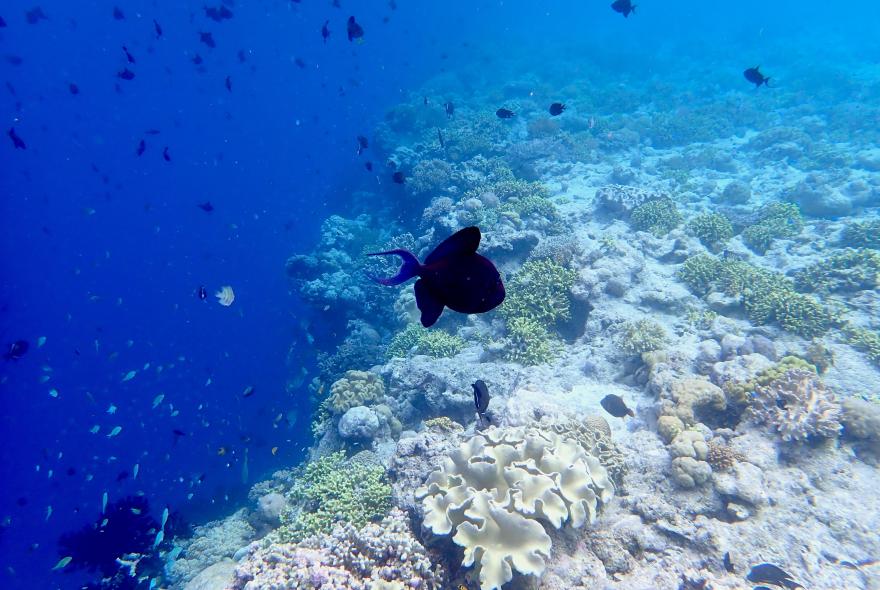
This image illustrates the reef edge (1) to the north of the jetty, with scattered corals and soft corals inshore (2) with little sand between them. The near-vertical face of the reef drops well below normal snorkeling depth, but the upper areas have numerous caves, ledges and an array of hard corals, soft corals, sponges and associated fish species. Off the reef edge is the area where more open water fish species aggregate as well as turtles and sea snakes.
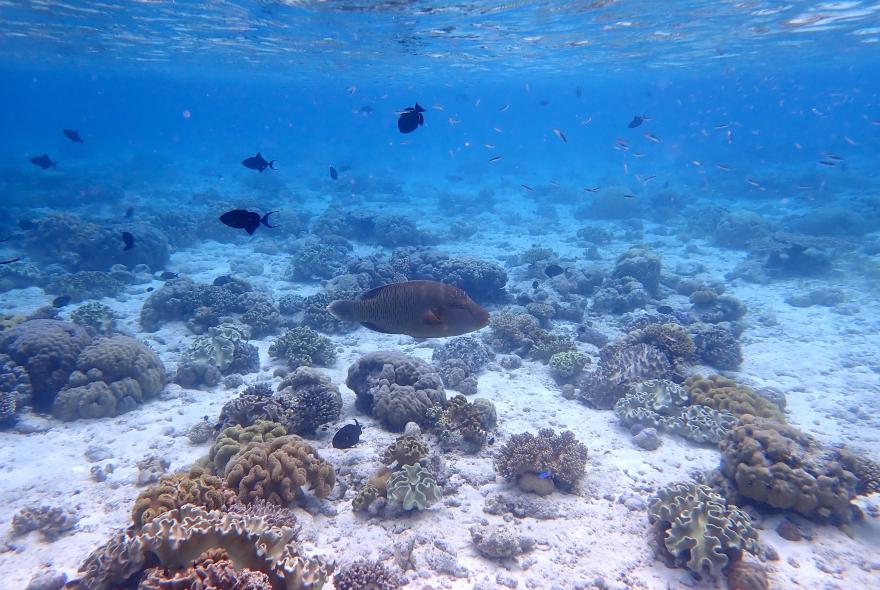
Inshore of the reef edge the scattered corals and soft corals persist, generally with flat, silt covered rock between (2). Much of the flat rock has hollows and holes, which numerous fish species hide in.
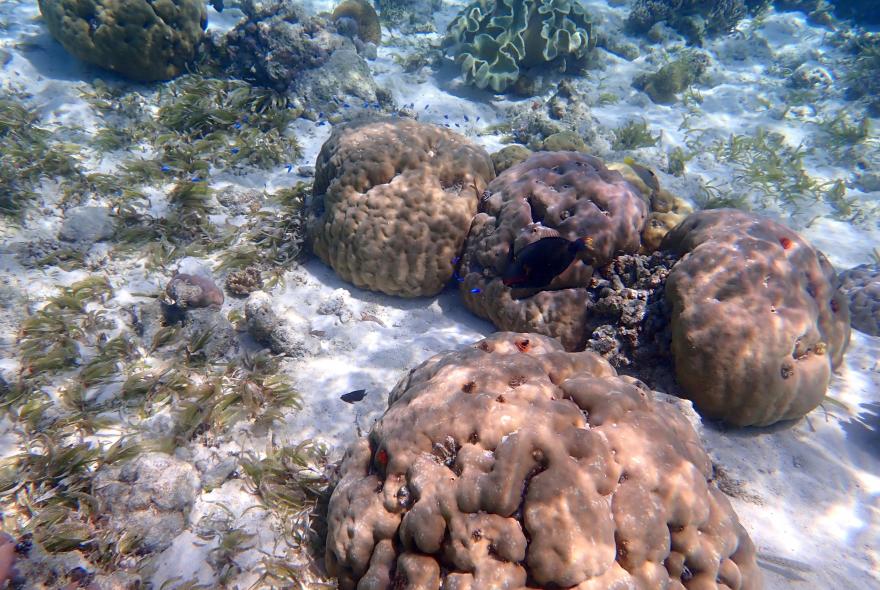
Where sand appears between the scattered coral and soft corals, several seagrass species begin to populate the gaps (3), initially Thalassodendron ciliatum.
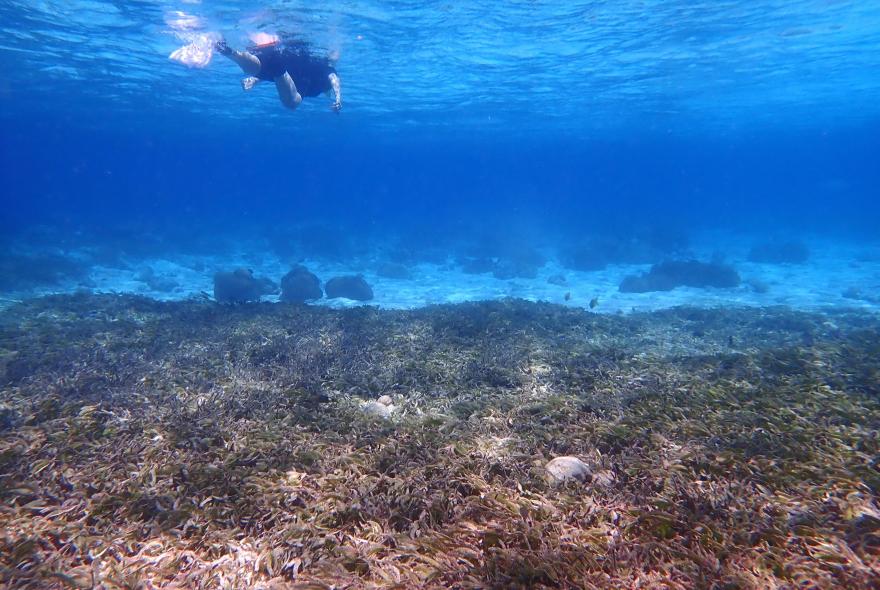
Dense seagrass patches exist over much of the inshore areas, comprising multiple species (4).
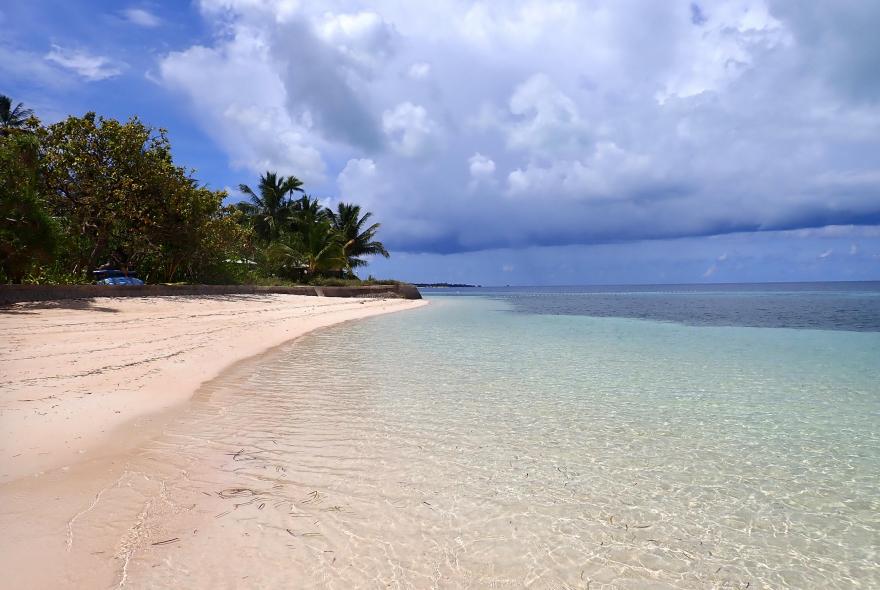
Shallow water sands (5) are evident along the whole coast, with man made seawalls to the south. The image is taken facing south from the jetty with the seawall to left.
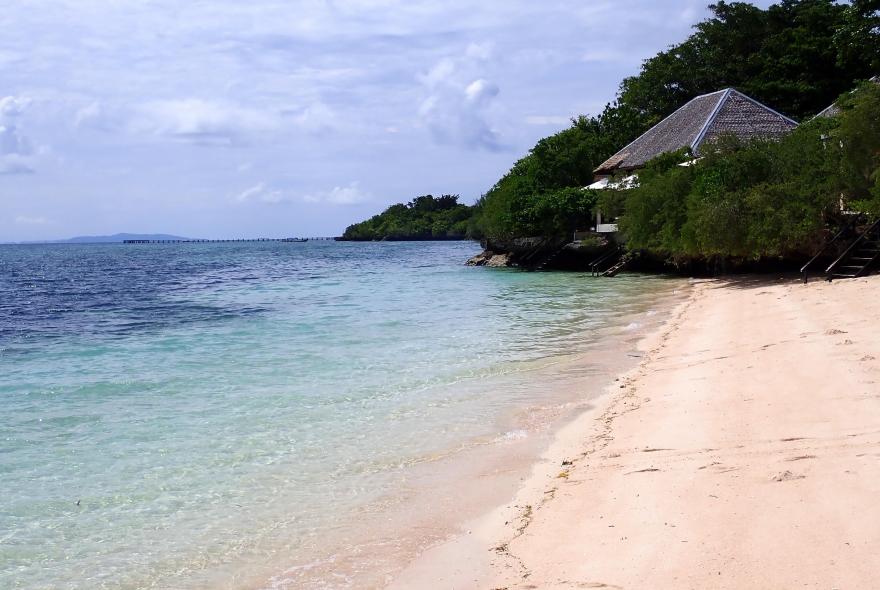
The shallow water sands (5) extend to the northern end of the resort beach, where sea cliffs are present. Beneath these sea cliffs, areas of flat rock may be found densely populated by (small) giant clams (7).
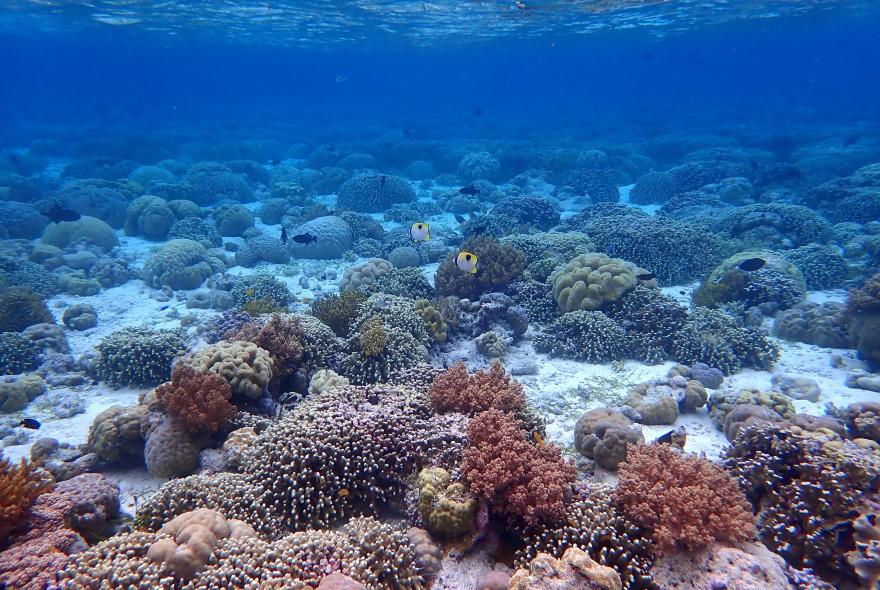
The shallow water coral is generally patchy but a large area of dense shallow coral reef (Porites spp.) and soft coral was evident to the north of the area (6).
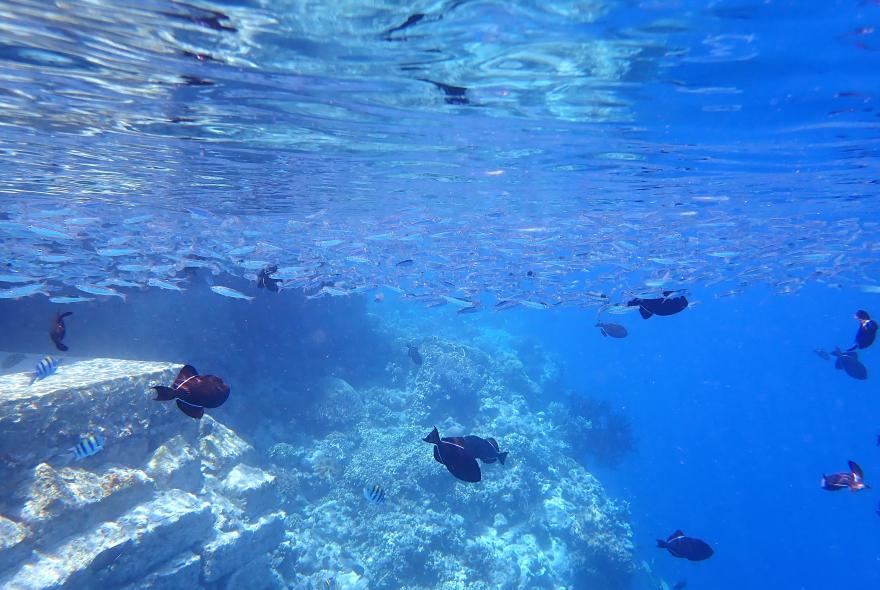
Three other features were evident around the resort, which are worth visiting, including the area around the jetty (8), which encourages numerous different species seeking shelter; a large canyon like feature (9) to the southern area of the reef edge, where several of the bigger fish species aggregate; finally the distressed area to the north of the jetty (10). Although disturbed by the inevitable vessel activity it is worth a look as it supports a variety of species not evident elsewhere, particularly at night.
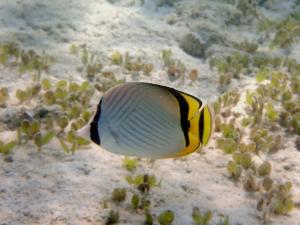
Vagabond Butterflyfish. Cheatodontidae. Chaetodon vagabundus. Solitary or in small groups in scattered coral and seagrass areas (2 and 3).
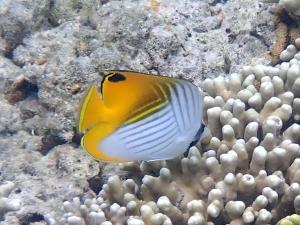
Threadfin Butterflyfish. Cheatodontidae. Chaetodon auriga. Solitary off the edge of the reef, area 1.
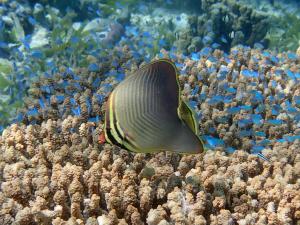
Eastern Triangular Butterflyfish. Cheatodontidae. Chaetodon baronessa. Noted over Acropora plate coral in area 1.
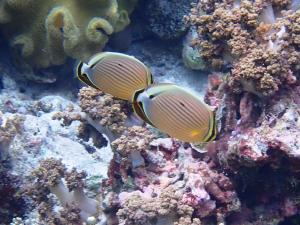
Redfin Butterflyfish. Cheatodontidae. Chaetodon lunulatus. Noted in pairs on the top of the reef edge (area 1) and over the scattered coral of area 2.
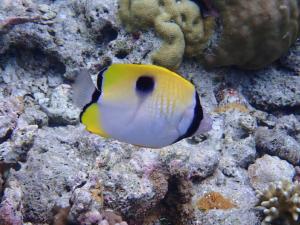
Teardrop Butterflyfish. Cheatodontidae. Cheatodon unimaculatus. Noted solitary over the edge of the reef, area 1.
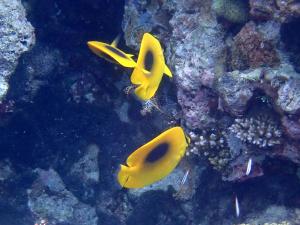
Oval-Spot Butterflyfish. Cheatodontidae. Chaetodon speculum. Small group just off the edge of area 1.
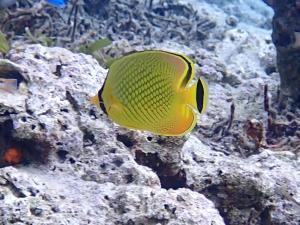
Latticed Butterflyfish. Cheatodontidae. Chaetodon refflesi. Solitary or in pairs over areas 1, 2 and 3.
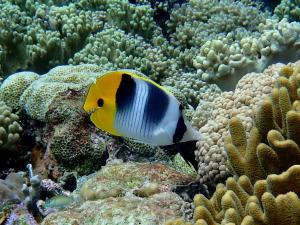
Pacific Double-Saddle Butterflyfish. Cheatodontidae. Chaetodon ulietensis. Noted solitary over area 2.
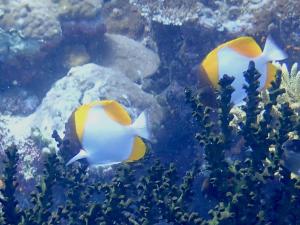
Pyramid Butterflyfish. Cheatodontidae. Hemitaurichthys polylepis. Found in aggregations off the edge of the reef, area 1.
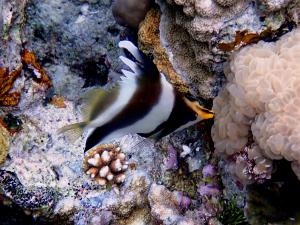
Pennant Bannerfish. Cheatodontidae. Heniochus chrysostomus. Noted off area 1 in slightly deeper water.
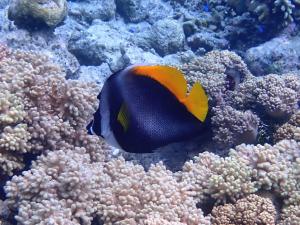
Singular Bannerfish. . Cheatodontidae. Heniochus singularius. Solitary off the edge of the reef, area 1.
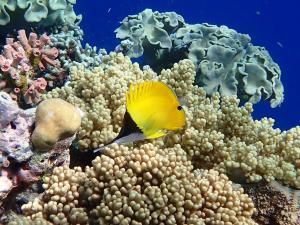
Big Longnose Butterflyfish. Cheatodontidae. Forcipiger longirostris. Noted in solitary or in pairs along the top of the reef, areas 1 and 2.
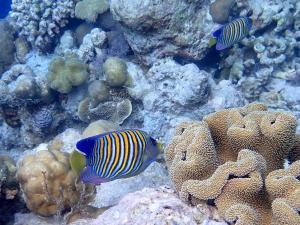
Regal Angelfish. Pomacanthidae. Pygoplites diacanthus. Pair noted over the edge of the reef, areas 1 and 2.
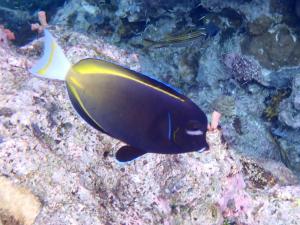
Whitecheek Surgeonfish. Acanthuridae. Acanthurus nigricans. Bit fuzzy but illustrates characteristic white marks on the head. Noted off the reef edge, area 1.
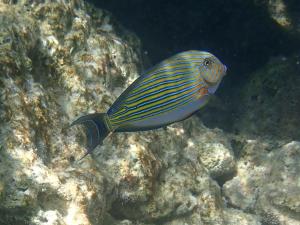
Striped Surgeonfish. Acanthuridae. Acanthurus lineatus. Solitary species, found in the vicinity of the jetty, areas 8 and 10.
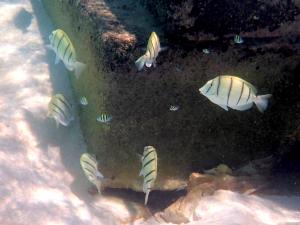
Convict Surgeonfish. Acanthuridae. Acanthurus triostegus. Small groups noted in shallow waters, in this instance around steps on the seawall at high water. Seen in areas 3, 4 and 5.

Palette Surgeonfish. Acanthuridae. Paracanthurus hepatus. Noted solitary on the top of the reef including the sporadic coral with seagrass, areas 1, 2 and 3.
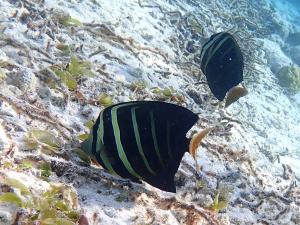
Pacific Sailfin Tang. Acanthuridae. Zebrasoma velifer. Noted solitary or in pairs over the inshore edge of the reef, including the sparse coral and seagrass, areas 1, 2 and 3.
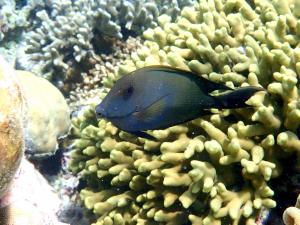
Lined Bristletooth. Acanthuridae. Ctenochaetus striatus. Noted in groups or solitary. Over areas 1, 2 and 3.
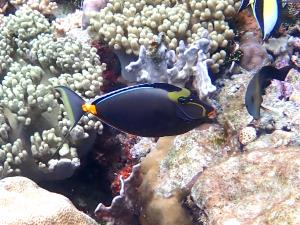
Orangespine Unicornfish. Acanthuridae. Naso lituratus. Noted solitary over the top of the reef, area 1.
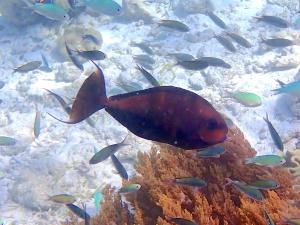
Dark phase Bignose Unicornfish. Acanthuridae. Naso vlamingii. Noted in the company of a shoal of Chromis, area 2.
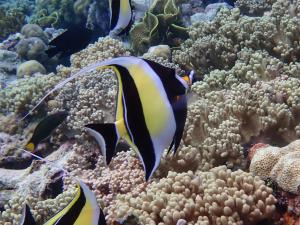
Moorish Idol. Zanclidae. Zanclus cornutus. One of the most distinctive species in the area. Noted in pairs or small groups, areas 1, 2 and 3.
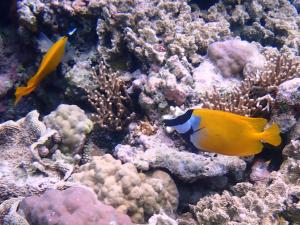
Foxface Rabbitfish. Siganidae. Siganus vulpinus. Noted in small groups in the more coral rich area, 1.
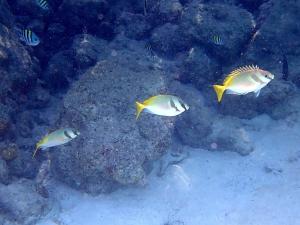
Barred Rabbitfish. Siganidae. Siganus doliatus. Small group noted in the vicinity of the jetty, area 10.
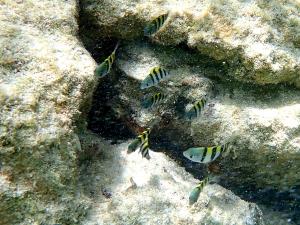
Juvenile Indo-Pacific Sergeant . Pomacentridae. Abudefduf vaigiensis Clustering around the base of the jetty supports.
